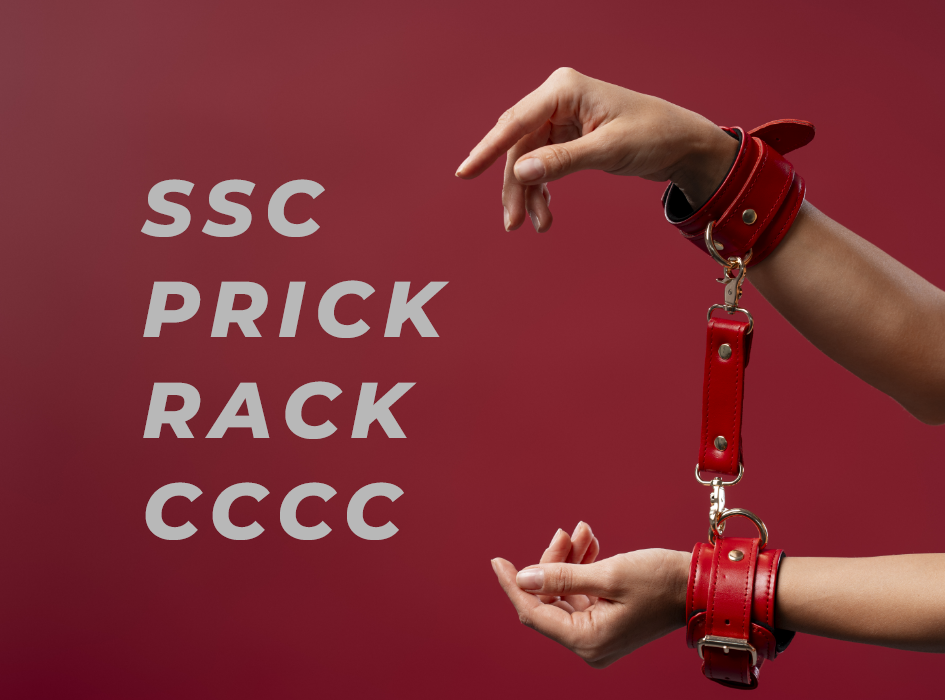BDSM is about trust, consent, and mutual pleasure. It can create deep emotional and physical connections between partners. But what happens when things start feeling wrong or unsafe? Even in a kinky relationship, abuse can sneak in if one partner doesn’t respect the basic rules of consent and care.
Understanding the difference between healthy BDSM and abuse is essential. This guide helps identify red flags so that you can keep your relationship safe, fulfilling, and respectful.
Is BDSM the Same as Abuse?
No, BDSM isn’t inherently abusive. In fact, BDSM is built on consent, communication, and trust. Without these, it isn’t BDSM—it’s just harm.
What makes BDSM different is context. Let’s break it down:
- Consent transforms actions. A consensual spanking is fun foreplay, while an unwanted hit is abuse.
- Communication sets the tone. Calling your partner “Master” during play is enjoyable if agreed upon, but forcing someone to act submissive in public against their will is a huge red flag.
The BDSM community has acronyms like SSC (Safe, Sane, Consensual), RACK (Risk-Aware Consensual Kink), and The 4 Cs (Caution, Caring, Communication, Consent) to emphasize the importance of safety and understanding in kink relationships.
Signs Your Kinky Relationship Might Be Abusive
Just like any other relationship, BDSM dynamics can become toxic or abusive if one partner doesn’t respect the rules. Here are 7 signs to watch for:
1. They Don’t Respect Your Boundaries
Boundaries are essential in BDSM. Healthy partners discuss and respect each other’s limits. If your partner dismisses or ignores your boundaries, it’s a major problem.
What this looks like:
- Pressuring you to try something you’ve already said no to.
- Saying things like, “Come on, don’t be boring,” or “You’ll enjoy it eventually.”
Healthy behavior:
A caring partner will never make you feel bad for having boundaries.
2. They Manipulate Your Emotions
Emotional safety is as important as physical safety in BDSM. If your partner uses guilt, fear, or your insecurities to control you, it’s a clear sign of emotional abuse.
What this looks like:
- Making you feel like you’re not “submissive enough” or “dominant enough.”
- Guilt-tripping you into doing things you’re uncomfortable with.
3. They Keep You in the Dark
Honesty is non-negotiable in BDSM. If your partner hides details, avoids conversations about safety, or isn’t transparent about what’s happening, it’s a red flag.
What this looks like:
- Skipping discussions about safewords or aftercare.
- Doing things during a scene that weren’t agreed upon beforehand.
Healthy behavior:
Both partners should feel informed and prepared before any BDSM activity begins.
4. They Dismiss Your Concerns
In a healthy BDSM relationship, your concerns are taken seriously. If your partner makes you feel silly or stupid for voicing worries, it’s a sign of manipulation.
What this looks like:
- Saying things like, “You just don’t understand real BDSM,” or “This is how it’s supposed to be done.”
- Mocking you for being uncomfortable.
Healthy behavior:
Open communication and respect for your feelings are key.
5. They Don’t Use or Respect Safewords
Safewords are essential for ensuring safety during BDSM play. They give you a way to stop or pause an activity immediately, no questions asked.
What this looks like:
- Refusing to use safewords.
- Ignoring your safeword during a scene.
Healthy behavior:
A safeword is a non-negotiable part of any BDSM dynamic.
6. Your Safety Isn’t a Priority
BDSM can involve physical and emotional intensity, which makes safety a top priority. If your partner disregards your well-being, it’s a serious problem.
What this looks like:
- Skipping aftercare, leaving you feeling abandoned or overwhelmed.
- Pushing your limits without discussing it first.
Healthy behavior:
A good partner will check in on you during and after scenes to make sure you’re okay.
7. They Use Threats or Blackmail
Healthy BDSM relationships are built on trust, not fear. If your partner threatens you, blackmails you, or uses intimidation, it’s abusive behavior.
What this looks like:
- Saying they’ll “out” you to friends or family if you leave them.
- Threatening to harm you if you don’t do what they want.
Healthy behavior:
You should feel free to express your needs, set limits, or leave the relationship without fear of retaliation.
Abuse Can Look Similar in Vanilla and Kinky Relationships
Some signs of abuse are universal, whether the relationship is vanilla or BDSM. Watch out for:
- Extreme jealousy or possessiveness.
- Controlling behavior, like dictating who you can talk to or what you can do.
- Public humiliation or gaslighting.
- Isolating you from friends, family, or community support.
BDSM Is About Consent, Not Control
BDSM isn’t about one partner dominating or controlling the other—it’s about both partners enjoying the experience, guided by mutual trust and consent. Abuse happens when this balance is broken.
If you notice any of the red flags mentioned above, don’t ignore them. Talk to trusted friends, seek advice from kink communities, or consult a therapist who understands BDSM dynamics. Your safety—both physical and emotional—should always come first.
Final Thoughts
BDSM is only healthy when it’s consensual, respectful, and safe. By understanding the signs of abuse, you can protect yourself and create a fulfilling, enjoyable dynamic. Remember: consent is an ongoing conversation, not a one-time agreement. If you ever feel unsafe or disrespected, it’s okay to step away. Your well-being matters more than anything else.
Related posts
-
Acronyms of BDSM : A Look at SSC, RACK, PRICK and CCCC
BDSM acronyms have emerged and been debated over a time as away to protect BDSM......
-
Is It Common to Lose an Erection When Wearing a Condom?
Have you ever been ready to go, but lost your erection when putting on a......
-
Is the Idea of a Cuckquean Rooted in Myth or Real-life Practices?
A cuckquean is a woman whose husband is unfaithful, often with her knowledge and sometimes......


